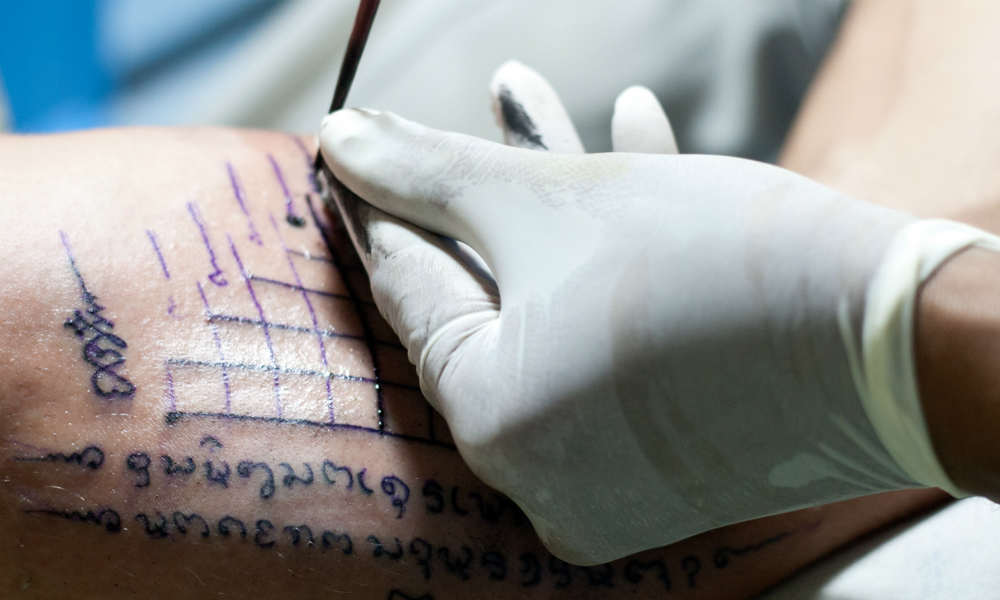Traditional Tattoo Methods from Around the World
Controse Jewelry on Oct 24th 2018

With the growing presence and mundanity of tattoos, traditional tattoo methods from all across the world have been gaining attention. Many of those techniques are still in use today and others are slowly getting back the spotlight they deserve. As with trends in fashion or practices throughout history, we tend to watch them faze out with time, and as interest shifts to other areas, before eventually returning back to popularity. Traditional tattoo methods from the ancient times are no exception to this trending cycle and anyone looking for a unique and traditional tattoo method for their next tattoo will want to continue reading as we’ll cover 4 of the most unique tattoo methods from around the world.
Bamboo Tattoo - Tebori Piercing Technique
The bamboo tattoo technique requires a great amount of experience and skill and often takes thousands of hours for an artist to master the bamboo tattooing art. Essentially, this technique is simply an extreme version of the hand poke method, typically found in many parts of Japan and Thailand.
Tool: A handcrafted needle, made from bamboo wood that has been formed to be smooth and round on the end, and finished with up to 24 points at the tip.
Method: Ink is applied to the sharp ends and then ‘punted’ into the skin at a shallow angle, just enough to make sure the ink is able to set in. This can be quite a painful method if the needle being used is blunt and not pointed. The angle and depth at which the needle is applied to the skin must be done with incredible accuracy in order to achieve the best result.
Skin Stitching - Puncture Technique
Unique to the indigenous communities within North America, skin stitching is rare to find outside of these particular communities. The method used itself, is quite extreme and may make some shiver.
Tool: A thread and a special needle specific for skin stitching.
Method: The thread used is soaked in ink and then literally stitched into the skin. When removed, the tattoo of the thread will be left behind.
Hand Tapped Tattoo - Puncturing Technique
Traditionally observed by the Australasian indigenous and Pacific Islanders; this technique has reached across the world, stretching its way around the globe. The modern methods we use today is said to have originated from the hand tapped tattoo technique.
Tool: A L-shaped tool and a hammer are used. In variations of this methods, glass or brass rods are used.
Method: The tool used is dipped into ink and then punctured into the skin repeatedly, at a 90-degree angle. The up and down motion of the tool punctures the skin’s surface and forces the ink in.
Ink Rubbing - Cutting Method
Finishing off with what we’d describe as the most extreme traditional tattoo method is that of ink rubbing. If you’re queasy with blood and have a low pain threshold, this is not the method for you as it’s not for the faint of heart. Ink Rubbing was one of the most traditional tattoo methods used throughout New Zealand and Borneo and although rare to find the method in practice today, it still does exist.
Tool: X-acto knife (specific for tattooing)
Method: The skin is literally cut to create a design, which ink is then rubbed into as the name suggests.
—————————————————————————————
Nowadays, it’s more common to see tattoo artists using a standard tattoo machine, for reasons of practicality and for the fact they are less invasive. Traditional tattoo techniques from around the world varied greatly depending on the rituals and rights of the cultures within each region. Religious beliefs, sacrificial practices, and forms of identification within cultures also played a large role in the techniques that were used to puncture the skin. Influence from other parts of the world also played a part in the methods used. Although technological enhancements developed the traditional tattoo methods around the world, some of the most traditional methods can still be found in use today.
